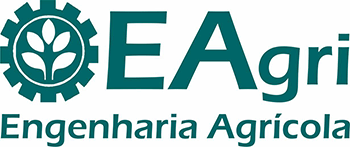ABSTRACT
The feasibility of using sewage wastewater as a water and nutrient source for plants is an alternative to harness agricultural natural resource, observing its influence on the organic matter dynamics and soil energy. Our objective here was to evaluate the effects of applying different doses of effluent from a sewage treatment plant, in Janaúba – MG, Brazil, over the physical attributes of a soil grown with “Prata Anã” banana. From soil sample collection at depths of 0-20, 20-40, and 40-60 cm, we determined the following soil properties: soil density, total porosity, macroporosity, microporosity, organic matter, clay dispersed in water and stability of soil aggregate. The experimental design was in randomized blocks with four repetitions. Wastewater raising doses promoted increase in suspended solids, contributing to macroporosity reduction at 20-40 and 40-60 cm depths; as well as a reduction in organic matter within 0-20 cm layer. Clay dispersal was observed in the depths of 0-20 cm, being derived from an increase in sodium content. Concurrently, there was a reduction of soil aggregate stability.
Musa spp; agricultural reuse of effluents; environmental sanitation; semi-arid

